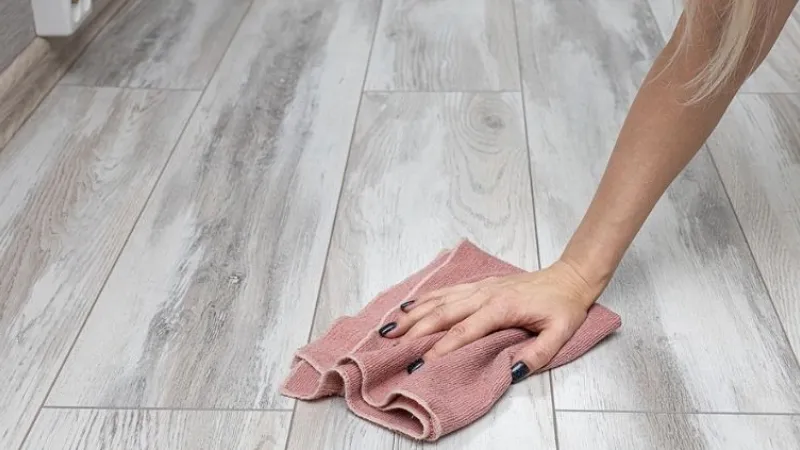You might be curious about linoleum flooring if you’re looking to replace the floors in your house. Learn about your flooring options and select the one that best suits your requirements and preferences.
What is linoleum flooring? Its main component, linseed oil, is combined with other organic materials like cork dust, wood flour, pine resin, ground limestone, and pigments. The mixture is then pressed onto a woven backing made of the organic plant fiber jute. It is entirely biodegradable because it is made entirely of natural materials.
Please keep reading for more details.
What is Linoleum Flooring?
A variety of naturally renewable materials are used to make linoleum flooring. While the actual composition will vary by manufacturer, it primarily contains a mixture of linseed oil, jute, cork powder, tree resin and wood flours. Linoleum has the design woven into the fabric rather than being spread across multiple layers like vinyl flooring does.
Pros
- Flooring made of linoleum is incredibly robust and tear-resistant. With proper care, it can last over 40 years.
- Linoleum flooring installation is significantly less expensive than other flooring options.
- There are numerous colors, patterns, and styles to choose from.
- Since linoleum flooring is water-resistant, it is perfect for use in kitchens and bathrooms.
- Linoleum is made of renewable materials and, unlike other types of flooring, is biodegradable.
- Volatile organic compounds (VOCs), which could have negative effects on health, are not released by linoleum flooring.
- In comparison to vinyl flooring, it is scratch-resistant and conceals damage much better.
- minimal maintenance, only requiring occasional sweeping and mopping.
Cons
- Resilient linoleum is susceptible to dents from furniture legs.
- Linoleum flooring does require professional installation, which can be expensive.
- If exposed to direct sunlight, linoleum may eventually darken or turn yellow.
- Some varieties of linoleum are sensitive to moisture, especially exposure to standing water, which can result in long-term damage.
- Linoleum flooring that has recently been waxed and is brand new can be slick and dangerous for slips and falls.
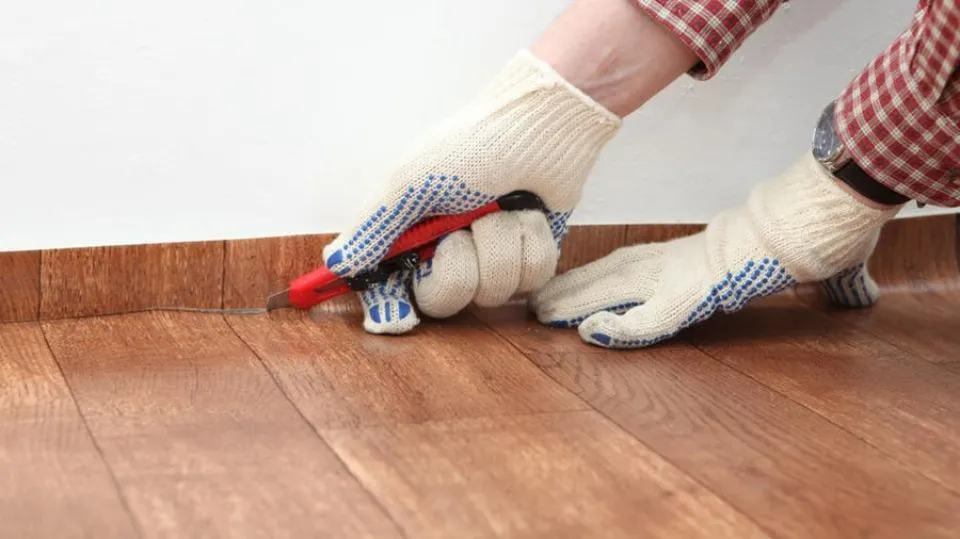
Where to Use Linoleum Flooring?
Linoleum flooring naturally repels dirt and pet hair and is really easy to clean, so it’s perfect for any high-foot-traffic areas, like your entryway, mudroom, or living room. If dirt seems to follow your kids wherever they go, linoleum is also a great choice for your child’s playroom. Linoleum is also water-resistant, so it works well in damp basements. Just remember to clean up spills and flooding right away.
Water and Heat Resistance of Linoleum Flooring
Although linoleum is water-resistant, it is not impervious to moisture damage, so it needs to be sealed on occasion to guard against liquid penetration. A linoleum installation could be destroyed by flooding, and too much humidity occasionally causes the corners of sheets or individual tiles to curl.
Of the two materials, linoleum has better heat resistance. Linoleum typically does not melt instantly when touched by hot skillets or curling irons, unlike vinyl flooring. Additionally, unlike vinyl, linoleum takes longer to burn and release toxic fumes during a house fire.
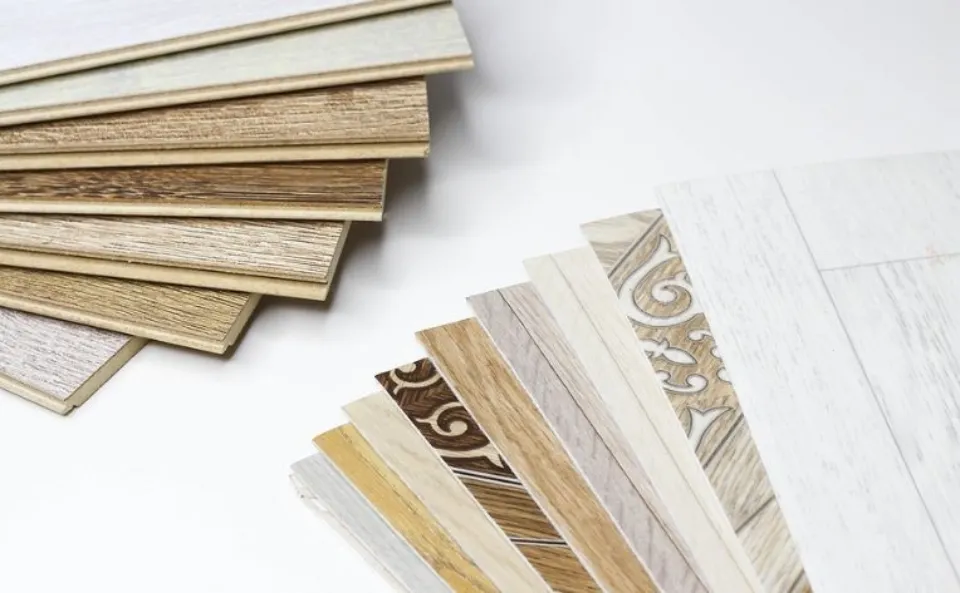
Linoleum Flooring Care and Cleaning
Since linoleum is almost as simple to maintain as vinyl, public buildings like hospitals, schools, and other healthcare facilities have long preferred it as a floor covering. Simply give it an occasional sweep and/or vacuum. Hand cleaning stains with a rag and a mild detergent is possible. Manufacturers recommend using a cleaning solution made for linoleum, since off-the-shelf detergents may have high pH levels that can damage the surface.
Linoleum Flooring Durability and Maintenance
Due to its construction, which uses solid material throughout the thickness of the flooring, linoleum is regarded as the more durable flooring material. Both flooring types are reasonably simple to maintain, but linoleum needs to be sealed on occasion to keep it stain and moisture resistant, unlike vinyl flooring, which doesn’t. Since linoleum is a slightly softer material than vinyl, it is more prone to scratches and gouges. However, because there is no core layer to be seen through, minor damage is somewhat less noticeable.
Linoleum Flooring Installation
Linoleum installation can be very similar to vinyl installation, but sheet linoleum installation can be even more challenging and is almost always done by experts. Although cutting sheets is a little more difficult than cutting vinyl, a good linoleum knife usually does the trick. The sheets are adhered using a glue-down bond, and the seams are joined using welding. Linoleum also comes in tiles and planks that are easier for DIY installation; they may use a “click-lock” joining method that allows the tiles or planks to float over the subfloor without any adhesives, much the way that luxury vinyl or laminate planks are installed.
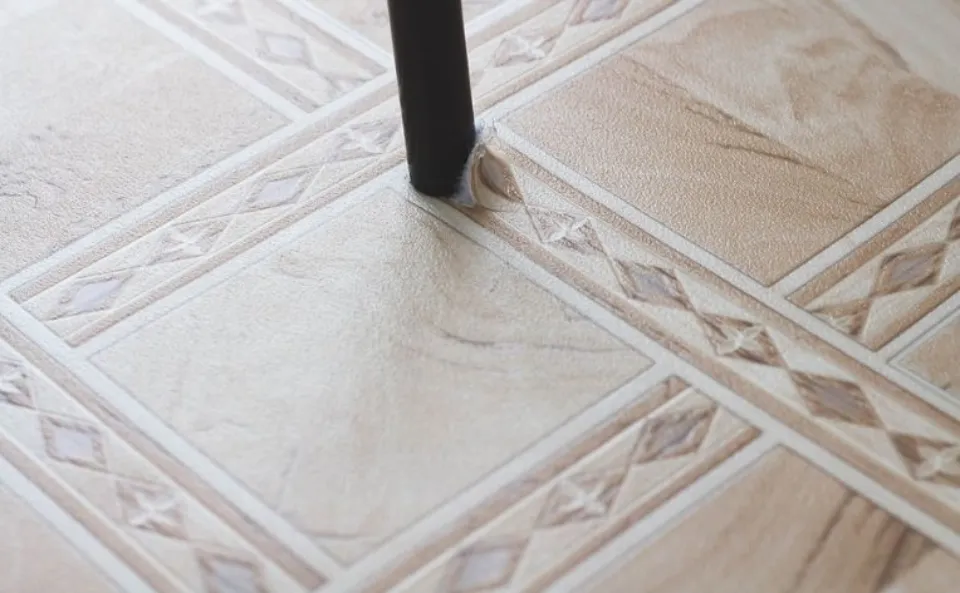
Linoleum Flooring Lifespan
The lifespan of linoleum flooring is what makes it so appealing to homeowners. A linoleum floor can last anywhere from 20 to 40 years or more with proper maintenance. Linoleum will however age over time, making it appear older until it needs to be replaced, unlike other types of flooring.
Consider this when making your choice because some people prefer the vintage appearance of worn-out linoleum while others don’t.
Linoleum Flooring Cost
Linoleum flooring is more expensive than vinyl flooring, not to mention, it requires professional installation, which adds to the final cost. On average, sheet linoleum costs between$2 to $2.50 per square foot and linoleum tiles average about $3.50 to $5 per square foot installed. With higher-end, luxury, and designer styles, higher prices are undoubtedly a possibility.
Linoleum Flooring Sizes
Rolls of sheet linoleum measuring six or twelve feet long are also offered. Planks of linoleum typically measure 48 to 60 inches long and 4 to 8 inches wide, making them comparable in size to luxury vinyl planks.
Linoleum Flooring Environmental Considerations
A very key difference—and one that makes all the difference in the world to some homeowners—is the “green” nature of linoleum. A material as different from vinyl as linoleum could possibly be. Its primary ingredient is plant-based linseed oil, which is mixed with other natural materials. A linoleum floor might last 40 years instead of possibly needing to be torn out and replaced in as little as 10 years, and when you do finally get rid of it, the component materials decompose safely in the environment.
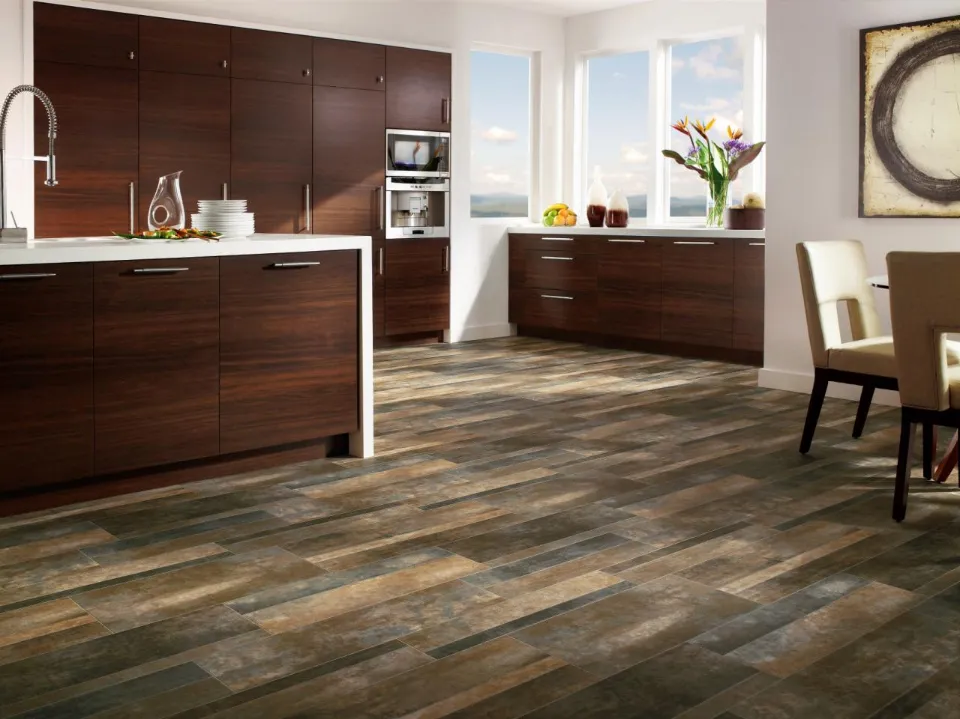
Linoleum Vs. Vinyl Flooring: Major Differences
Linoleum was the original resilient flooring material. Linoleum was discovered when it was observed that linseed oil being used as a paint thinner developed a solid, tough, but flexible film that floated on top of the paint. It was first patented more than 160 years ago. Experimentation showed that this material could be blended with other materials to create a product that made for a very durable and adaptable building material—an ideal material for flooring. Linseed oil, a naturally occurring substance obtained from flax seeds, makes up a large portion of modern linoleum. For use as flooring, this is combined with other organic and renewable materials like cork dust, wood flour, and pine rosin. The main distinction between vinyl flooring and linoleum is probably that it is made entirely of natural materials.
Linoleum was popular for kitchen and other utility room floors from the late 1800s to the 1950s. Linoleum is a solid material through-and-through and it has no printed design layer, which gives it unique wear characteristics.
In the 1920s, the substance known as vinyl was discovered. It is entirely synthetic, unlike linoleum, and consists primarily of PVC (polyvinyl chloride). In the 1960s, it became widely used as a less expensive alternative to linoleum flooring. PVC vinyl is used as the core material in flooring products, which have a felt or fiberglass backing and a durable surface wear layer that shields the photographic design layer.
Modern consumers who care about the environment have serious concerns about the production of vinyl because it uses a variety of toxic chemicals. In addition to the PVC plastic, vinyl includes various phthalate plasticizers for flexibility. There are known carcinogens in a number of the chemicals used in its production.1 Further, the manufacturing process makes use of large quantities of petroleum and requires a considerable amount of energy. Discarded vinyl flooring is practically impossible to get rid of safely.
All of these environmental considerations mean that green-minded consumers are now rediscovering linoleum as a safer alternative to vinyl flooring. Linoleum, once out of date, is now stylish and contemporary.
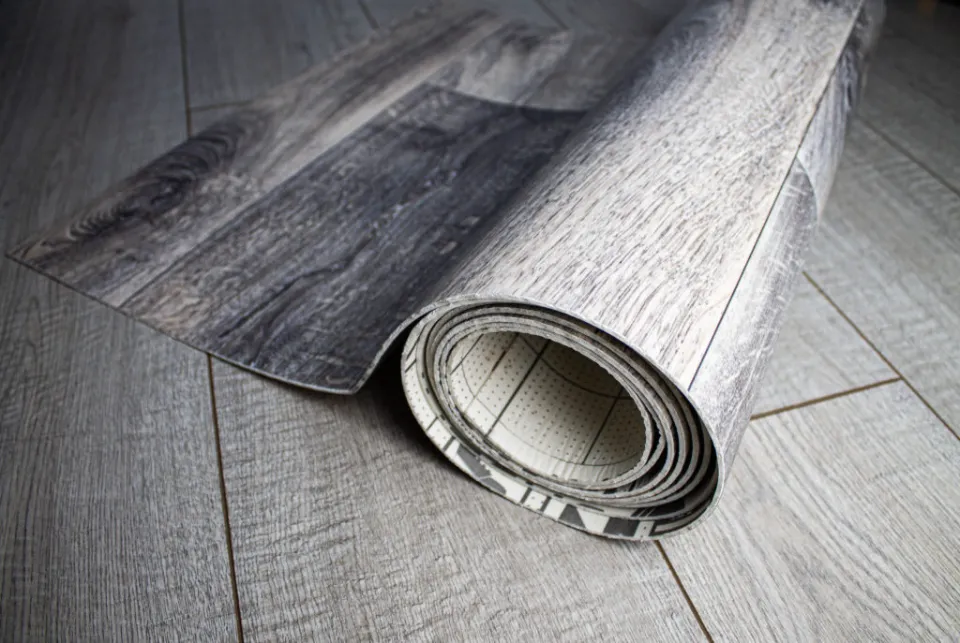
FAQs
Is Linoleum Same as Vinyl?
Linoleum is a solid material through-and-through and it has no printed design layer, which gives it unique wear characteristics. Vinyl as a material was discovered in the 1920s. Unlike linoleum, it is a completely synthetic material comprised mostly of PVC (polyvinyl chloride).
What is Linoleum Used For?
Linoleum is commonly used for flooring purposes in different sorts of buildings. Linoleum and vinyl are frequently confused, but they are totally unrelated. It is the main component of linseed oil and is made of natural materials like wood or cord powder, ground stone, etc.
What is Linoleum Material?
Linoleum is made out of exclusively natural ingredients.
From the linseed oil and pine rosin that bind the ingredients together to the jute backing on which they lie, almost all are renewable. The end result is a floor covering that is as resilient and recyclable as it is natural and lovely.
Is Linoleum Waterproof?
Linoleum, which is comprised of cork and wood materials, is highly susceptible to water damage. Conversely, high-moisture areas are ideal for vinyl sheet flooring.
Summary: What is Linoleum Flooring?
Linoleum flooring can be a long-term investment that will resist decades of wear and tear without losing its essence. Keep in mind that linoleum installation may need professional assistance, which can raise the overall cost compared to other flooring options. Consider these advantages and disadvantages when choosing linoleum flooring if you’re thinking about it. Linoleum floorings can last well over 40 years with minimum maintenance and care and add a unique presence to your home.
If you have any questions, please leave a comment. My Prime Home tries to give you the best home improvement information. Don’t forget to share the post. Thank you for reading.
Read about
